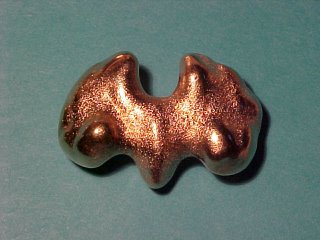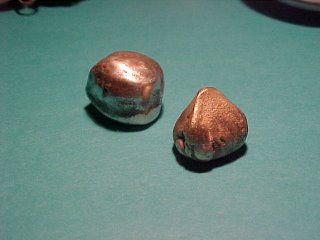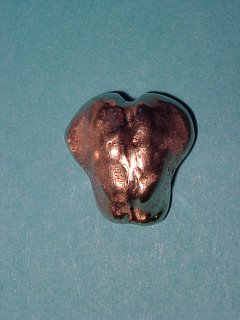The Walnut Series
 For several months last year I was out of work and had a lot of time on my hands. I would take a walk each day up to the local thrift shop to see what was new. On these walks I would take a plastic bag with me and look for the English Walnuts Black Walnuts and Filberts/Hazelnuts that were surfacing in the spring as well as the ones that the Squirrels were diggin up and eating, so I would gather the discards too.
For several months last year I was out of work and had a lot of time on my hands. I would take a walk each day up to the local thrift shop to see what was new. On these walks I would take a plastic bag with me and look for the English Walnuts Black Walnuts and Filberts/Hazelnuts that were surfacing in the spring as well as the ones that the Squirrels were diggin up and eating, so I would gather the discards too.
When I got home each day, I would look over what I had found, clean them out, melt down some scrap gold or silver and cast the molten metal directly into the shells. I soon discovered that by sawing the shells open at different angles, I could predict what shape the mold would produce, but with the unpredictability of the internal dimentions and the volume of metal used, nature still does the directing to reach the final product. No two are ever going to be alike
I call this casting, the lovers and friends. When looked at from this angle, the one is kissing the other on the cheek, when it is turned upside down, they are just holding hands.
 This has to be the smallest English Walnut I have ever seen, the tree it came from is said to be over 100 years old, the older it gets, the smaller it's nuts are.
This has to be the smallest English Walnut I have ever seen, the tree it came from is said to be over 100 years old, the older it gets, the smaller it's nuts are. Here are a pair of Filberts or otherwise known as Hazelnuts. The one on the left is cast in Sterling, the one on the right is cast in 14K gold. I will be doing a lot of internal work to remove the excess metal so they will be a lot lighter than they are now, and make them into pendants or perhaps as a ring would be nice.
Here are a pair of Filberts or otherwise known as Hazelnuts. The one on the left is cast in Sterling, the one on the right is cast in 14K gold. I will be doing a lot of internal work to remove the excess metal so they will be a lot lighter than they are now, and make them into pendants or perhaps as a ring would be nice. The differrent castings seem to take on anthropormorphic like shapes, this one in 14K of an English Walnut reminds me of a male torso.
The differrent castings seem to take on anthropormorphic like shapes, this one in 14K of an English Walnut reminds me of a male torso. This English Walnut cast in Sterling when struck, rings like a bell or a tuning fork. Trying to come up with a way of using it so that it doesn't loose that wonderful tonal quality.
This English Walnut cast in Sterling when struck, rings like a bell or a tuning fork. Trying to come up with a way of using it so that it doesn't loose that wonderful tonal quality.


